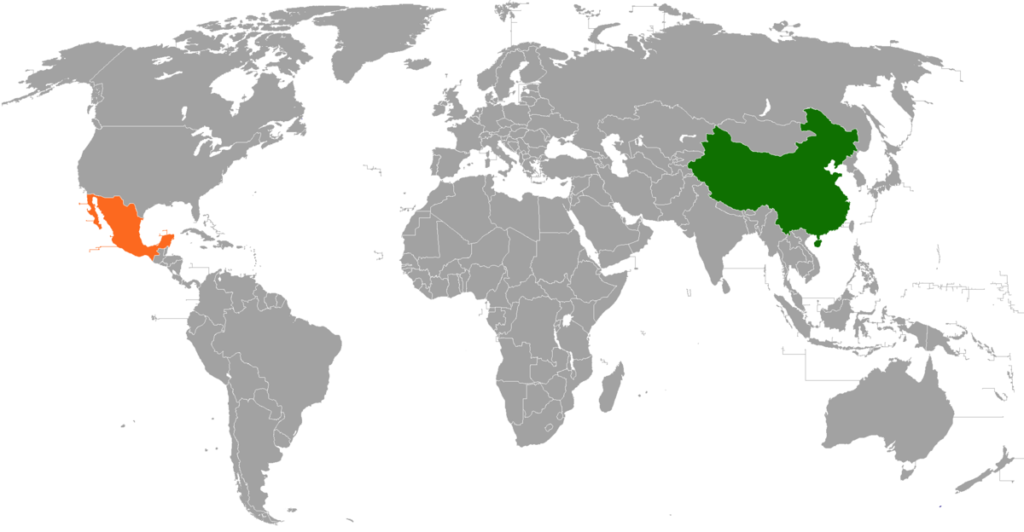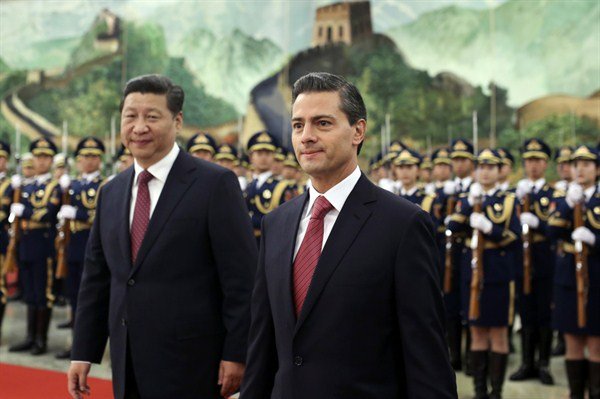The relationship between China and Mexico is a complex interplay of historical ties, economic interactions, geopolitical considerations, and cultural exchanges. Despite their geographical distance, these two nations have increasingly intertwined in the global arena, shaping each other’s trajectories in significant ways. From ancient trade routes to modern diplomatic engagements, the relationship between China and Mexico has evolved through different phases, influenced by shifting global dynamics and domestic priorities. In this comprehensive analysis, we will explore the historical foundations, contemporary economic partnerships, political engagements, and cultural exchanges that define the China-Mexico relationship.
Historical Context
The historical connections between China and Mexico date back centuries, with early interactions facilitated by ancient trade routes such as the Silk Road. Chinese porcelain, silk, and other goods made their way to the Americas via Spanish galleons, while Mexican silver and other commodities were transported to China. These early exchanges laid the groundwork for cultural diffusion and commercial relations between the two regions.
During the 19th century, Chinese immigrants began arriving in Mexico, particularly in the wake of the California Gold Rush. Many Chinese laborers played crucial roles in building Mexico’s infrastructure, working on projects such as the construction of railroads and irrigation systems. However, their presence also led to tensions and discrimination, culminating in incidents like the 1911 Torreón Massacre, where hundreds of Chinese residents were killed during the Mexican Revolution.
Despite these challenges, Chinese migration continued, and by the mid-20th century, Chinese communities were established in various parts of Mexico, contributing to its cultural diversity. These historical ties form the backdrop against which modern Sino-Mexican relations unfold.
Economic Interactions
In recent decades, economic ties between China and Mexico have deepened significantly. China has emerged as one of Mexico’s top trading partners, with bilateral trade volumes reaching billions of dollars annually. Mexico exports a diverse range of products to China, including minerals, agricultural goods, and manufactured goods, while China exports electronics, textiles, and machinery to Mexico.
One of the key drivers of economic cooperation between China and Mexico is their participation in global supply chains. Mexico serves as an important manufacturing hub for North American markets, while China’s manufacturing prowess and access to global markets complement Mexico’s industrial capabilities. This complementary relationship has led to increased investment flows between the two countries, with Chinese firms investing in sectors such as automotive, telecommunications, and renewable energy in Mexico.

The signing of the China-Mexico Free Trade Agreement in 2008 further facilitated trade and investment between the two countries, reducing tariffs and trade barriers. However, concerns have been raised about the trade imbalance between China and Mexico, as well as issues related to intellectual property rights and market access.
Despite these challenges, both countries are willing to strengthen economic cooperation through initiatives such as the Belt and Road Initiative (BRI) and the Comprehensive and Progressive Agreement for Trans-Pacific Partnership (CPTPP). These frameworks provide avenues for deeper integration and collaboration across various sectors, laying the foundation for future economic partnerships.
Political Engagements
The political relationship between China and Mexico has also witnessed significant developments in recent years. Both countries are members of international organizations such as the United Nations and the World Trade Organization, where they often collaborate on issues of mutual interest, such as climate change, sustainable development, and global governance.
At the bilateral level, high-level visits and diplomatic exchanges have become more frequent, signaling a desire to strengthen ties and deepen cooperation. Chinese President Xi Jinping’s visit to Mexico in 2013 and Mexican President Enrique Peña Nieto’s visit to China in 2014 highlighted the importance of the relationship and paved the way for enhanced collaboration in areas such as trade, investment, and cultural exchange.
However, the political relationship between China and Mexico is not without its challenges. Issues such as human rights, territorial disputes, and geopolitical tensions can strain relations between the two countries. For example, Mexico’s recognition of Taiwan as an independent state has been a source of friction with China, which considers Taiwan to be a renegade province.
Despite these challenges, both countries have demonstrated a commitment to dialogue and engagement, recognizing the importance of maintaining stable and constructive relations in an increasingly interconnected world.
Cultural Exchanges
Cultural exchanges between China and Mexico have flourished in recent years, driven by a growing interest in each other’s history, language, and traditions. Educational exchanges between universities and research institutions have increased, fostering collaboration in fields such as language teaching, archaeology, and anthropology.
Chinese language and culture have gained popularity in Mexico, with the establishment of Confucius Institutes and Chinese language programs in academic institutions across the country. Similarly, Mexican culture, including its cuisine, music, and art, has found admirers in China, leading to cultural events, exhibitions, and festivals celebrating both nations’ rich heritage.
In addition to formal cultural exchanges, people-to-people connections have also deepened through tourism, migration, and diaspora communities. Chinese tourists visit Mexico to explore its historical sites, natural beauty, and vibrant culture, while Mexican migrants and students travel to China to study, work, and experience life in a different cultural context.
These cultural exchanges serve as a bridge between the peoples of China and Mexico, fostering mutual understanding, friendship, and cooperation across borders.
Challenges and Opportunities
Despite the progress made in their relationship, China and Mexico face several challenges that could impact their future interactions. Economic competition, trade imbalances, and geopolitical tensions pose risks to bilateral cooperation, while domestic political dynamics and global uncertainties may affect the trajectory of their relationship.

Moreover, issues such as environmental degradation, climate change, and public health crises require collaborative solutions that transcend national boundaries. China and Mexico have a shared interest in addressing these challenges through multilateral frameworks and cooperative initiatives that promote sustainable development and inclusive growth.
At the same time, opportunities abound for deeper engagement and partnership between China and Mexico. As major emerging economies with significant influence regionally and globally, both countries can leverage their respective strengths to promote economic prosperity, social development, and cultural exchange.
By harnessing the potential of their strategic partnership, China and Mexico can contribute to a more balanced, inclusive, and interconnected world order, where mutual respect, cooperation, and shared prosperity are the guiding principles.
The relationship between China and Mexico is a dynamic and multifaceted one, shaped by historical legacies, economic imperatives, political considerations, and cultural affinities. Despite their geographical distance and differences in size and population, these two nations have found common ground in their shared pursuit of development, prosperity, and global engagement.
From ancient trade routes to modern economic partnerships, the China-Mexico relationship has evolved, reflecting the changing dynamics of the international system and the aspirations of their peoples. While challenges remain, including economic competition, political differences, and cultural misunderstandings, the potential for collaboration and cooperation between China and Mexico is vast.
As they navigate the complexities of the 21st century, China and Mexico have an opportunity to build a strategic partnership based on mutual respect, shared interests, and a commitment to common goals. By working together, they can overcome challenges, seize opportunities, and contribute to a more stable, prosperous, and interconnected world for generations to come.
